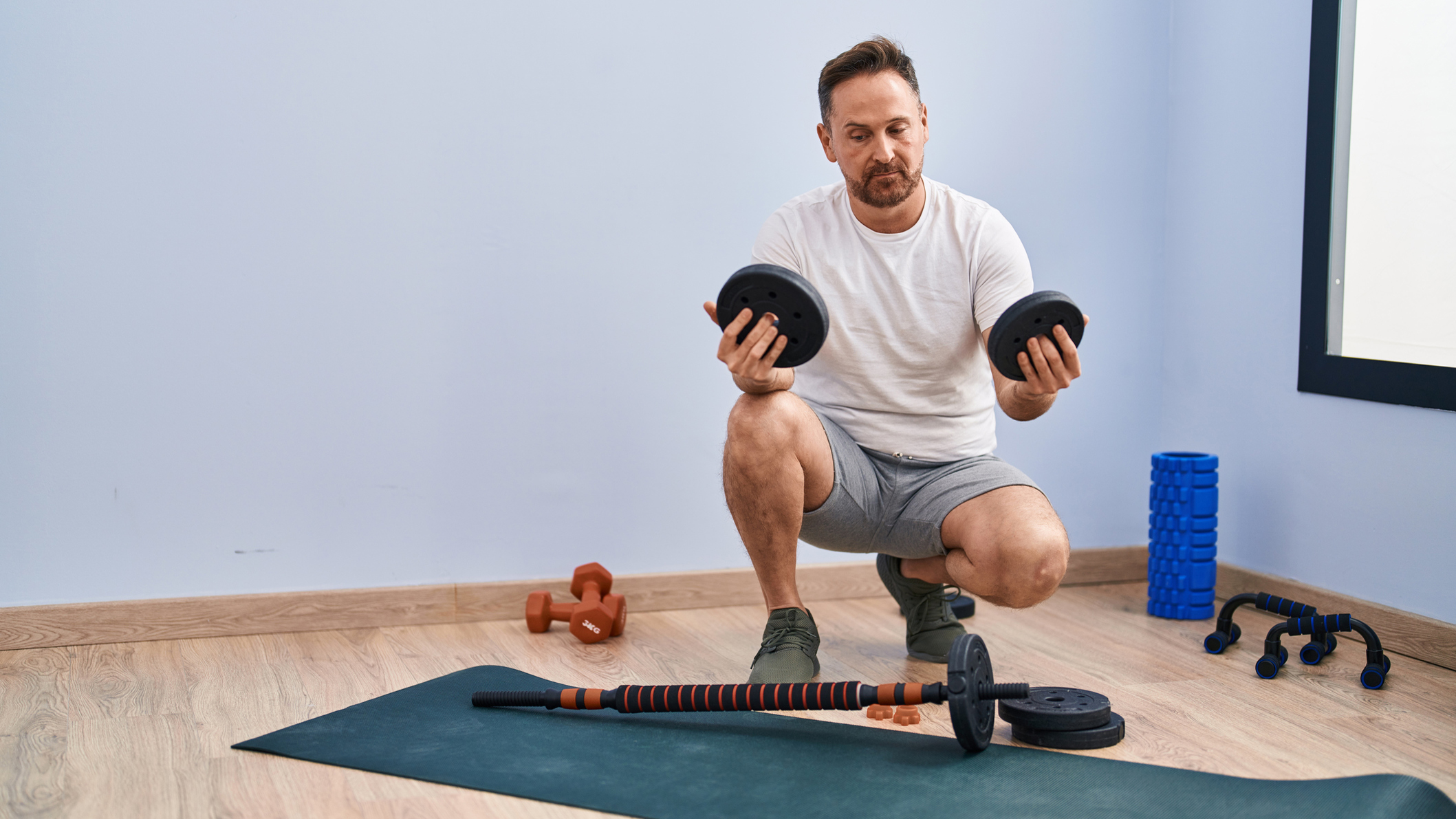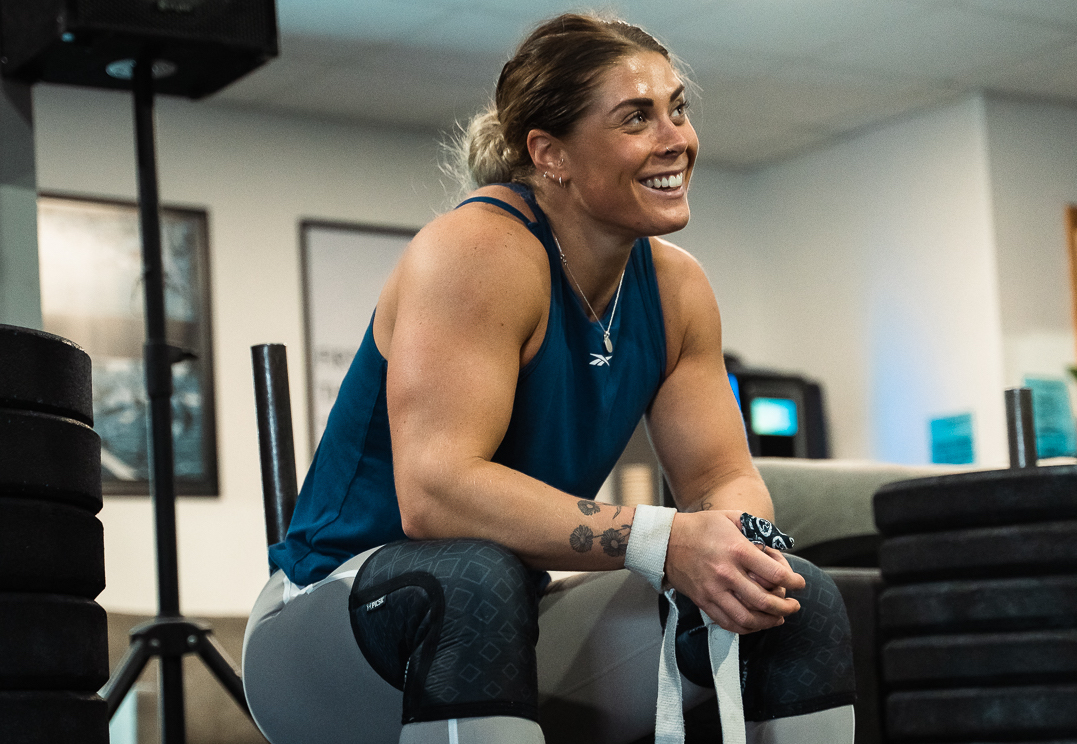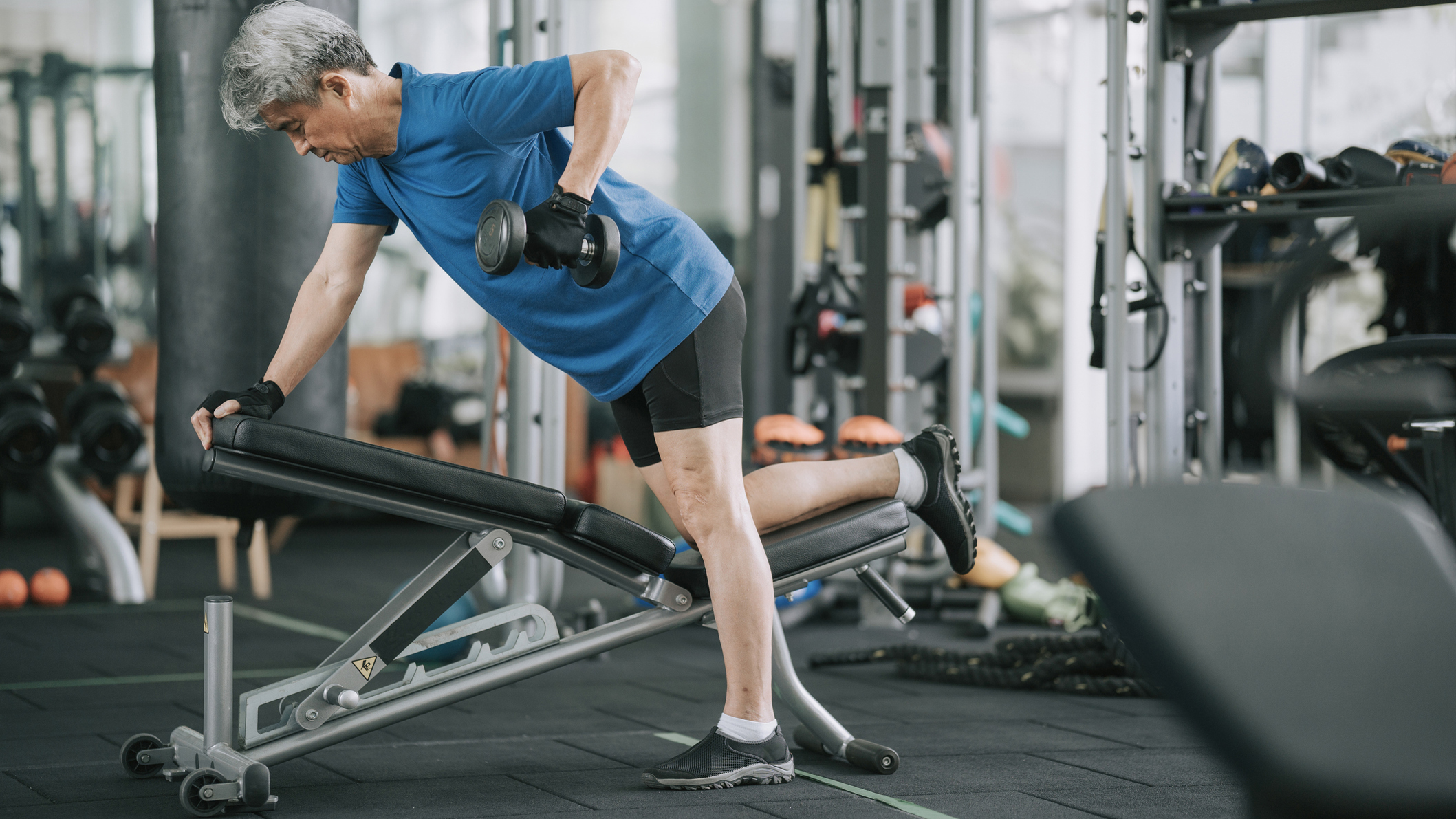Weight vs reps: which is more important for building muscle?
Is lifting a heavy weight or doing a high number of reps better for building muscle? We asked the experts to explain

When you start lifting, one of the first things you'll need to consider is whether you should focus on doing a high number of reps or lifting the heaviest weight you can manage.
Reps simply means the number of repetitions you do of a particular move, like a barbell curl or a squat. In general, if you want to build bigger muscles, you'll need to find the sweet spot between using a challenging weight load and hitting a good number of repetitions. However, if you want to get stronger, it's better to focus on maxing out the weight you're using.
There is some nuance to this general guidance. We sat down with CrossFit athlete and personal trainer Tayla Howe to get some detailed advice.
Looking to invest in some muscle-building kit? Have a look through our guides to the best kettlebells and best adjustable dumbbells that you can use at home.

Tayla Howe is a CrossFit athlete and personal trainer who made it to the Last Chance Qualifiers of CrossFit Games, following an impressive semi-final performance. She competed at the 2018 Commonwealth Games for Wales and has her eyes firmly set on making it to the CrossFit Games in 2023 and Olympics in 2024.
Weight vs reps: what’s the difference?
Strength training is associated with lifting heavy weights for fewer reps. Endurance training, on the other hand, is associated with higher rep ranges at a lesser intensity. Muscle growth – or hypertrophy – sits somewhere in the middle.
According to Howe, if you want to build and grow muscle tissue, you need to engage in training sets comprising a high number of reps with a light (but still challenging) weight.
To find that sweet spot, you should aim for three to four sets of an exercise, each consisting of eight to 12 reps, with minimum rest time in between. As you move through the sets, you should get 'close to failure' – basically, it should feel progressively harder to complete the full number of repetitions in a set.
Start your week with achievable workout ideas, health tips and wellbeing advice in your inbox.

What weight should you be using?
Whenever you're lifting, the weight you use can be calculated as a percentage of the heaviest weight you can lift for one rep – otherwise known as your “one rep max” or 1RM.
You don't always want to be lifting at the top of this range. If you're focused on endurance training or hypertrophy, you should use a weight that's around 65-80% of your 1RM and try to complete three to four sets of 12 repetitions.
You want to get much closer to your 1RM if you're focused on strength, ideally lifting at around 85-100%. If this is your goal, Howe recommends aiming for a higher number of sets (around five) each consisting of between two and six repetitions.
Are reps or weight more important for muscle building?
Howe says lifting heavier weights is more efficient for building your top-end strength (your one rep max) so that your muscles will become stronger.
“Lifting a lighter weight for more reps will still help you build strength, but not as much,” she adds. “However, it is a great way to tone and increase muscle definition. So, if the goal is muscle visibility and size, hypertrophy is better, but if you want your muscles to be stronger, then strength training is better suited.”
In brief, using a slightly lighter weight and aiming for a higher number of reps is better if you want to focus on hypertrophy. If you're trying to get stronger, then focus on lifting in a range that's much closer to your 1RM.

Which is better for fat loss?
According to Howe: “The more muscle you have, the higher your metabolism, so both [weights and reps] are good for burning calories. But you will likely expend more energy lifting more reps than lifting heavier and for a smaller number of reps, as you will be lifting a higher volume for longer.”
The amount of calories you burn – and the amount of muscle you build – depends on whether or not you're lifting the right load. If you are going too light, then you won’t reach the required intensity. To make sure you are hitting a good level of intensity, you can monitor your perceived exertion (RPE, or how you feel out of 10) or you can use a heart rate monitor.
“When training CrossFit, you may perform lots of reps at a high intensity which is very good for fat loss,” says Howe. “You will likely work in zone 1 and zone 2 of your maximum heart rate, where your body will use fat and carbs for fuel — this will also boost your metabolism,” she says.
Final thoughts
So should you lift heavy or light weights to build muscle? Howe believes that everything is relative to your ability and you can try different approaches to suit your training style.
“One of the main principles in getting stronger and building muscle is progressive overload,” she says. “This is when you increase the difficulty of a lift by increasing the weight or reps, adding tempo (such as adding a pause at the bottom of a squat), or decreasing rest periods.”

To build strength at your top-end range, Howe recommends lifting heavy and taking appropriate rest periods between sets so your body can recover — typically anywhere from two to five minutes, with the longer durations appropriate for testing one rep maxes.
“Your working set weights should be around 85 to 100% of your one rep max, but for higher rep ranges and hypertrophy training, you will have shorter rest periods of 60 to 90 seconds, lifting at 65-85% of your one rep max.”
If you plan to calculate your percentages, testing your one rep max for each lift is crucial, and you’ll need to recalculate them as you progress in ability.

Sam Hopes is a level III fitness trainer, level II reiki practitioner, and resident fitness writer at Future PLC, the publisher of Fit&Well. Having trained to work with both the mind and body, Sam is a big advocate of using mindfulness techniques in sport and aims to bring mental wellbeing to the forefront of fitness. She’s also passionate about the fundamentals of training and how we can build more sustainable training methods. You’ll find her writing about the importance of habit-building, nutrition, sleep, recovery, and workouts.
